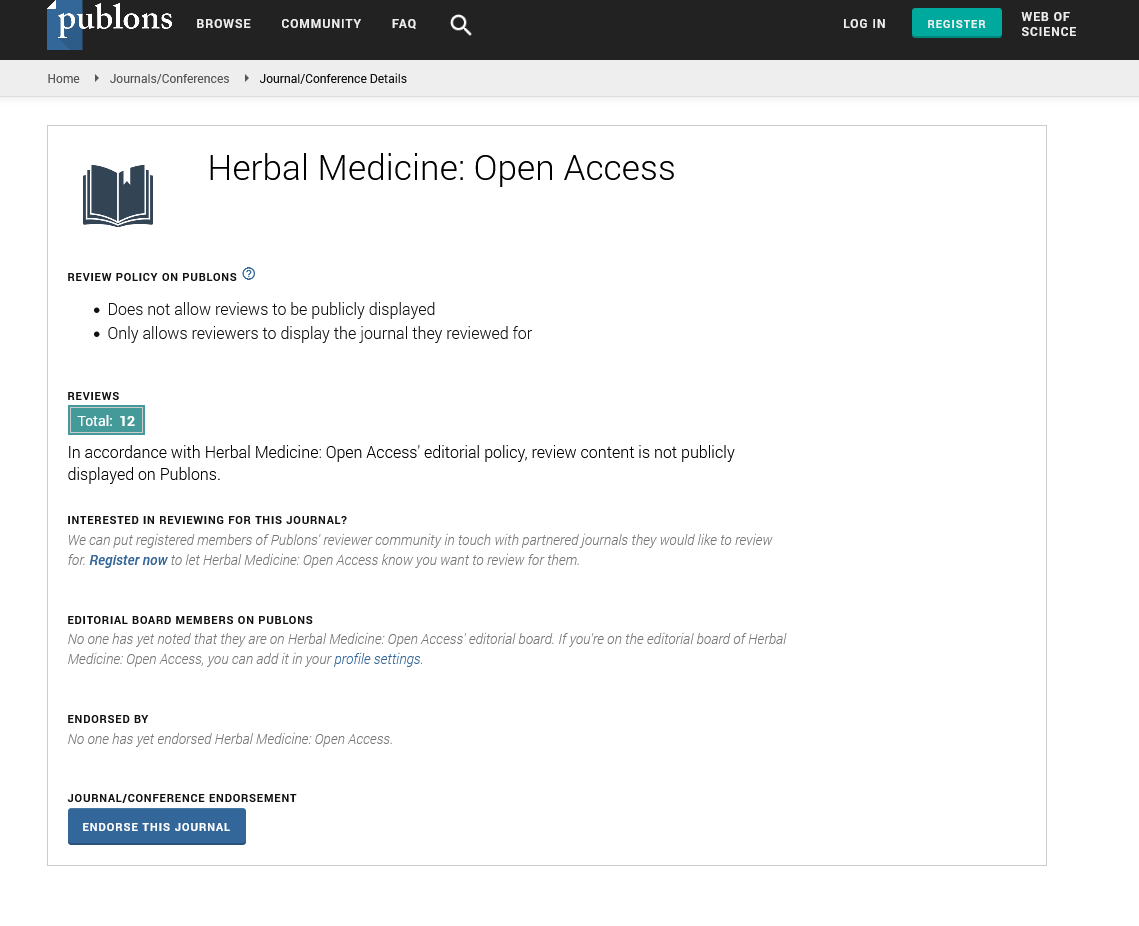Abstract
Chemical and Biological Studies of Nicotiana plumbaginifolia (Solanaceae)
Nicotiana plumbaginifolia Viv. is an annual herb belonging to the family Solanaceae, which grows abundantly in the weedy lands of Bangladesh. This plant possesses analgesic, antibacterial, anti-anxiety and hepatoprotective properties, and produces various phenolic compounds including flavonoids1. The present study afforded determination of total phenolic and flavonoid contents, and for the first time. Extensive separation and purification of the methanolic leaf extract of N. plumbaginifolia led to the isolation and characterization of highly oxygenated flavonoids, e.g., 3,3',5,6,7,8-hexamethoxy-4',5'-methylenedioxyflavone (1), 3,3',4',5',5,6,7,8-octamethoxyflavone (2, exoticin), 6,7,4',5'-dimethylenedioxy-3,5,3'-trimethoxyflavone (3) and (3,3',4',5,5',8-hexamethoxy-6,7-methylenedioxyflavone (4) from the leaves of N. plumbaginifolia2,3. All these flavonoids are rather rare natural products, and only found in a few genera, e.g., Polygonum and Murraya4. The structures of the isolated flavonoids were elucidated by comprehensive spectroscopic analyses, e.g., UV, 1H, 13C NMR, DEPT, HSQC, HMBC and MS. The present study further allowed us for the first time to determine the total phenolic and flavonoid contents as well as anti-nociceptive activity of the crude extract. The total phenolic and flavonoid content were determined using Folin–Ciocalteu’s reagent and aluminum chloride, respectively. The total flavonoid content was determined as 439.69 ± 0.87 mgQE /gextract which was releatively higher than measured total phenolic content (275.45 ± 2.75 mgGAE /gextract On the other hand, the antinociceptive activity was assessed using acetic-acid induced writhing, hot plate, tail immersion, formalin- and carrageenan-induced paw edema test, where the extract demonstrated significant antinociceptive activity.
Author(s): Mohammad Abdur Rashid
Abstract | Full-Text | PDF
Share this

Google scholar citation report
Citations : 271
Herbal Medicine: Open Access received 271 citations as per google scholar report
Herbal Medicine: Open Access peer review process verified at publons
Abstracted/Indexed in
- Google Scholar
- JournalTOCs
- China National Knowledge Infrastructure (CNKI)
- Directory of Research Journal Indexing (DRJI)
- WorldCat
- Publons
- Secret Search Engine Labs
- Zenodo
Open Access Journals
- Aquaculture & Veterinary Science
- Chemistry & Chemical Sciences
- Clinical Sciences
- Engineering
- General Science
- Genetics & Molecular Biology
- Health Care & Nursing
- Immunology & Microbiology
- Materials Science
- Mathematics & Physics
- Medical Sciences
- Neurology & Psychiatry
- Oncology & Cancer Science
- Pharmaceutical Sciences


